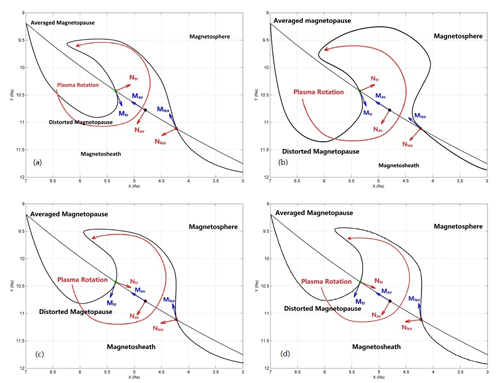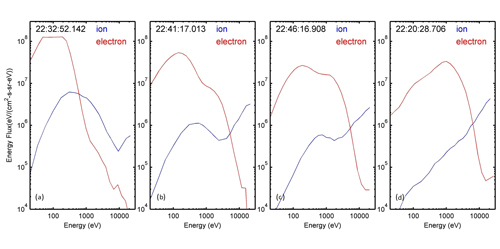
2020 THEMIS SCIENCE NUGGETS
THEMIS Probes Observed Plasma Transport into the Magnetosphere in Kelvin-Helmholtz vortices
by Guang Qing Yan
State Key Laboratory of Space Weather, National Space Science Center, Chinese Academy of Sciences
Introduction
The Earth’s magnetosphere is a cavity made by the planet’s intrinsic magnetic field in the solar wind, the expanding atmosphere of the sun. Although most of the fast moving solar wind is deflected outside the magnetosphere, a small portion of the solar wind plasma can transfer across the magnetopause, the outer boundary of the magnetosphere, through certain mechanisms. Besides magnetic reconnection at the magnetopause, the Kelvin-Helmholtz (K-H) instability is another candidate mechanism for solar wind plasma to be transported into the magnetosphere.
| Figure 1. Periodic encounters of the magnetopause and boundary layer, characterized by the fluctuations in the plasma parameters and the ion and electron energy-time spectra. |
Kelvin-Helmholtz instability is activated by velocity shear flows at an interface such as the magnetopause, a macroscale instability that causes macro-displacement of the interface. Vortices can be formed and rolled up by the instability when it grows to its nonlinear stage. Theoretically, plasma could possibly transfer across the magnetopause in these Kelvin-Helmholtz vortices. Such a phenomenon is predicted in some simulations but is rarely seen in spacecraft observations.
| Figure 2. The magnetopause distortions formed by the K-H vortices deduced by the minimum variance analysis, compared with the average magnetopause in dashed lines. |
Results
On March 28, 2016, one of the two probes of ARTEMIS at lunar orbit monitored an abrupt northward turning of the interplanetary magnetic field (IMF). At the same time, two of the three probes of THEMIS observed periodic encounters of the magnetopause and the boundary layer, accompanied with the coexistence of two different components, the cold plasma from the solar wind and the hot plasma from the magnetosphere. The upstream probe THEMIS-A observed wavelike structure prior to the downstream probe THEMIS-E by about 90 seconds. Detailed analysis showed that the wavelike structure is comprised of K-H vortices, a kind of ripple which propagates tailward along the magnetopause. The cold solar wind plasma transferred across the magnetopause and was coexisting in the boundary layer with the hot plasma from the magnetosphere. This transport region identified by the feature of coexisting plasmas appears to be more periodic at THEMIS-A while more dispersed at THEMIS-E, showing significant evolution from upstream probe to downstream probe. The THEMIS probe measurements also detected the same typical feature of cold and hot plasmas in the boundary layer.
| Figure 3. Typical portraits of the energy-time spectra of plasmas in different regions: the magnetosheath, the energetic particle streaming layer, the LLBL, and the magnetosphere, respectively. |
Conclusion
THEMIS observations indicate that a train of K-H vortices were formed in response to the northward turning of the IMF, and solar wind plasma was transported into the magnetosphere within the vortices. This scarce observation of plasma transport phenomenon within K-H vortices can give more clues to help us understand the transport process in the vortices.
Reference
Yan G. Q., Parks G. K., Cai C. L., Chen T., MacFadden J., Ren Y.: Plasma transport into the duskside magnetosphere caused by Kelvin-Helmholtz Vortices in response to northward turning of the interplanetary magnetic field observed by THEMIS, Annales Geophysicae, 38, 263-273, 2020.Biographical Note
Dr. Guang Qing Yan is an Associate Professor at the State Key Laboratory of Space Weather, National Space Science Center, Chinese Academy of Sciences. His research focuses on solar wind transport into the magnetosphere, and the interaction of the solar wind with the magnetosphere.
Professor George K. Parks is the author of the text book "Physics of Space Plasmas: An Introduction," and a Research Scientist in Space Physics at the Space Science Laboratory, University of California, Berkeley. His research widely covers Magnetosphere Physics and beyond.
 Please send comments/suggestions to
Emmanuel Masongsong / emasongsong @ igpp.ucla.edu
Please send comments/suggestions to
Emmanuel Masongsong / emasongsong @ igpp.ucla.edu



